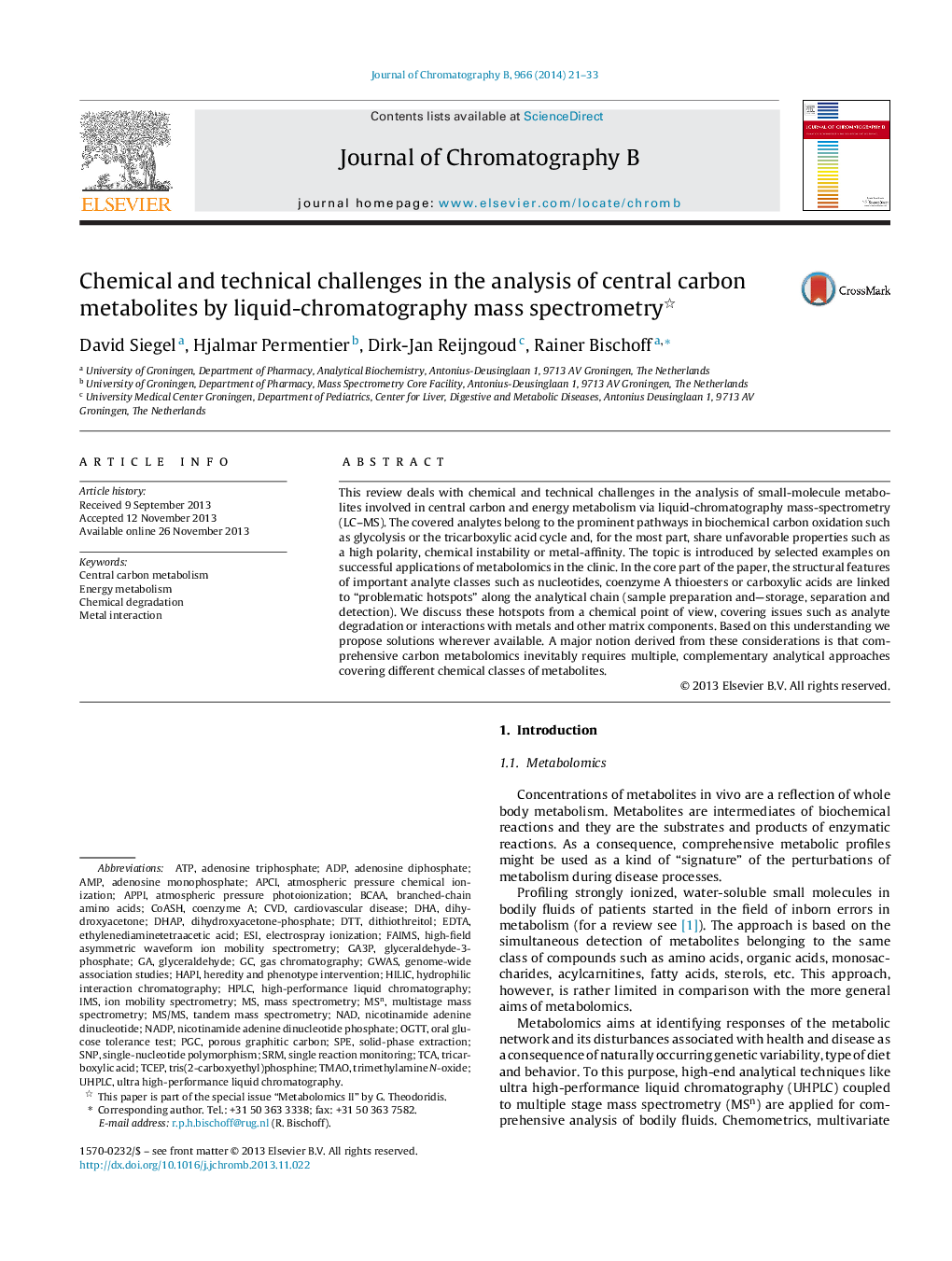| Article ID | Journal | Published Year | Pages | File Type |
|---|---|---|---|---|
| 1215879 | Journal of Chromatography B | 2014 | 13 Pages |
•The importance of central carbon metabolomics in the clinic is outlined.•Challenges in the analysis of central carbon metabolites via LC–MS are discussed.•Pre-analytical phase, chromatography and mass spectrometry are covered.•Chemical instability, isomer separation and metal interaction are problem areas.•Multiple, complementary methods are required for comprehensive analyte coverage.
This review deals with chemical and technical challenges in the analysis of small-molecule metabolites involved in central carbon and energy metabolism via liquid-chromatography mass-spectrometry (LC–MS). The covered analytes belong to the prominent pathways in biochemical carbon oxidation such as glycolysis or the tricarboxylic acid cycle and, for the most part, share unfavorable properties such as a high polarity, chemical instability or metal-affinity. The topic is introduced by selected examples on successful applications of metabolomics in the clinic. In the core part of the paper, the structural features of important analyte classes such as nucleotides, coenzyme A thioesters or carboxylic acids are linked to “problematic hotspots” along the analytical chain (sample preparation and—storage, separation and detection). We discuss these hotspots from a chemical point of view, covering issues such as analyte degradation or interactions with metals and other matrix components. Based on this understanding we propose solutions wherever available. A major notion derived from these considerations is that comprehensive carbon metabolomics inevitably requires multiple, complementary analytical approaches covering different chemical classes of metabolites.
